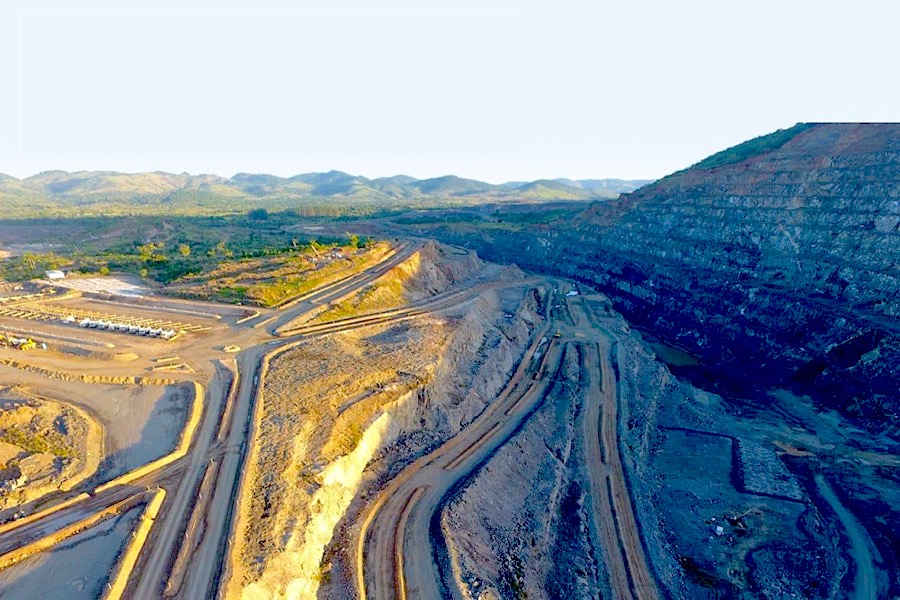
Appian Capital Advisory’s Atlantic Nickel has released the results from a preliminary economic assessment (PEA) of its wholly owned Santa Rita nickel-copper-cobalt mine in northeastern Brazil.
Santa Rita, one of the largest open-pit nickel sulphide mines in the world, was acquired by the private equity firm from Mirabela Nickel in a bankruptcy process in 2018.
Since open-pit operations restarted in August 2019, the mine has produced 48,000 tonnes of nickel concentrate. (Mirabela put the mine on care and maintenance due to low nickel prices in 2015.)
The company plans to start a prefeasibility study on the project next year
Mining from the open pit is scheduled to last eight years, ending in 2028. It will then transition to an underground mining operation, extending the life of the mine from eight to 34 years.
The PEA estimates production from the open-pit mine of 20,000-25,000 tonnes nickel-equivalent annually over eight years at an all-in sustaining cost (AISCs) of $4.12 per lb. nickel.
The underground operation, starting in 2028, is projected to produce 40,000-45,000 tonnes per year nickel-equivalent at AISCs of $3.92 per lb. nickel.
“Because the grade of the nickel in the deposit increases as you go deeper, almost doubling in nickel concentration, the PEA has not only outlined an extended mine life but has also increased the nickel produced as a result of the increasing grade,” says Adam Fisher, a principal on Appian’s financial team responsible for Atlantic Nickel’s portfolio.
The early-stage study estimates the mine would generate an after-tax net present value at an 8% discount rate of $795 million. It did not release a forecast for the project’s internal rate of return.
“The capital required for the underground mine development is $355 million from 2026 to 2030, with most of the cost being paid from existing cash flows from the open pit and so represents a largely self-funded underground expansion operation,” Fisher says.
Santa Rita’s open-pit measured and indicated resources stand at 59.15 million tonnes grading 0.33% nickel sulphide, 0.11% copper, 0.01% cobalt, 0.03 gram palladium per tonne, 0.06 gram platinum per tonne, and 0.04 gram gold per tonne.
Indicated resources for the underground mine tally 54.59 million tonnes grading 0.58% nickel sulphide, 0.18% copper, 0.01% cobalt, 0.05 gram palladium, 0.10 gram platinum and 0.07 gram gold.
Also included in the PEA were drill results from 106,000 metres of a drilling campaign conducted between 2018 and 2019.
“Total drilling at the mine now stands at over 300,000 metres,” Fisher says. “Over the past 18 months, we’ve essentially increased the drill database by over 50% to expand the mineral resources and to understand the continuity of the mineralization better.”
A 75,500-metre drill program undertaken at the underground deposit confirmed the continuation of significant thicknesses of disseminated sulphide mineralization that is amenable to bulk mining methods and included 5,000 metres of drilling for metallurgical sample collection, Fisher notes.
The company plans to start a prefeasibility study on the project next year.
(Carl A. Williams – This article first appeared in The Northern Miner on September 15)